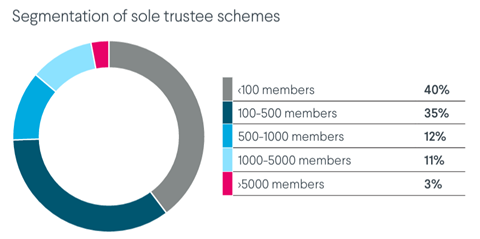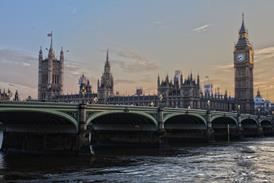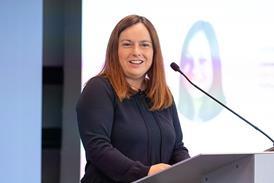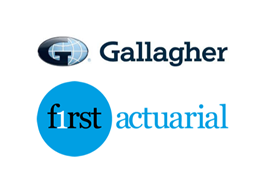Providers of sole trustee services have been reviewing their governance structures amid the growing popularity of the approach and increased scrutiny from the Pensions Regulator (TPR).
Around 20% of the estimated 4,900 private sector defined benefit (DB) pension schemes operating as of the end of March used the sole trustee model, according to a new report from Hymans Robertson.
The consultancy said it had observed a 13% year-on-year increase in the number of sole trustee appointments among the professional trustee companies it surveyed.
Almost half (48%) of DB schemes had a professional trustee on the board, including those with sole trustee arrangements. This meant that more than two in five (42%) of all professional trustee appointments were as a sole trustee, up from 37% in 2024.
Pension schemes adopting the sole trustee model are typically at the smaller end of the market, with 75% of appointments relating to schemes with 500 members or fewer.

Professional trustees in the regulatory spotlight
Sole trustees are a key focus for TPR. Earlier this year, the regulator announced a planned period of close engagement with professional trustee firms with a view to formally regulating the sector, having previously deemed it “systemically important”.
The sole trustee model and additional services provided by professional trustee firms are among the issues the regulator is exploring.
TPR chief executive Nausicaa Delfas explained earlier this year: “The professional trustee industry has experienced significant growth over the last few years, with more than half of UK schemes using a professional or sole trustee. Between them, just 10 firms govern more than a trillion pounds of savers’ retirement income.”
Hymans Robertson’s report said that professional trustee firms had welcomed TPR’s increased involvement. The voluntary code of conduct overseen by the Association of Professional Pension Trustees plays a key role in determining best practice and maintaining standards, the report said. TPR’s activity had brought “external oversight and assurance”, it said.
“As sole trustee portfolios have grown, a few firms have noted the need to review and refine their oversight functions to support a larger number of appointments.”
Shani McKenzie, Hymans Robertson
Shani McKenzie, head of sole trustee services at Hymans Robertson, added: “In terms of in-house governance approaches of the sole trustee providers, we’ve observed two key areas of difference, relating to the breadth of the head of sole trustee’s role and the level of oversight on individual schemes.
“As sole trustee portfolios have grown, a few firms have noted the need to review and refine their oversight functions to support a larger number of appointments.”
What sole trustee arrangements look like

The Hymans Robertson report explored the three main governance structures used by firms offering sole trusteeship.
The majority of the 19 providers who responded to the research use a structure led by trustee directors – usually two individuals – with the support of “scheme managers” who specialise in governance or scheme management issues. Decisions are usually made by the two trustee directors.
Other professional trustee firms will appoint two trustee directors to a scheme to make key decisions, with most other functions outsourced.
The third model involves separate specialist teams that assist the appointed trustee directors. These teams may specialise in areas such as administration, investment, or legal advice.
In most cases, regardless of structure, decisions are ultimately still made by the trustee directors. However, some firms allow some decisions to be made by one trustee director and one scheme manager. All “material” decisions must be signed off by accredited trustees.
“Sole trustee providers are clearly using a range of internal governance structures to oversee the management of the thousands of schemes they govern, with the size of the scheme often driving what’s proportionate,” McKenzie continued.
“Much like trustee boards, the governance arrangements needed for the handful of complex schemes with 10,000 or more members may differ from the governance needed for the 40% of schemes with less than 100 members.”
Who are the leading sole trustee providers?
Independent Governance Group and Vidett have the most sole trustee appointments, according to Hymans Robertson’s data, with between 150 and 200. Dalriada Trustees has between 100 and 150 sole trusteeships.
Proportionally, however, Entrust’s sole trusteeships dominate – the survey found that 94% of its appointments were for sole trustee arrangements. Entrust is owned by Gateley, a professional services firm.
The table below outlines the number of professional and sole trustee appointments for each of the 10 largest providers, as well as the proportion of sole trusteeships.
| Firm | Number of professional DB trustee appointments | Number of sole trustee appointments | Proportion of appointments that are sole trustee |
|---|---|---|---|
| BESTrustees | 150-200 | Fewer than 50 | 20% |
| Capital Cranfield | 250-300 | 50-100 | 39% |
| Dalriada Trustees | 200-250 | 100-150 | 58% |
| Entrust | 50-100 | 50-100 | 94% |
| Independent Governance Group | More than 300 | 150-200 | 47% |
| Law Debenture | 150-200 | Fewer than 50 | 26% |
| PAN Trustees | 100-150 | 50-100 | 54% |
| Pi Partnership | 50-100 | Fewer than 50 | 54% |
| Vidett | More than 300 | 150-200 | 50% |
| Zedra | 150-200 | 50-100 | 48% |
| Source: Hymans Robertson | |||
The report also listed 11 smaller professional trustee firms, each with fewer than 50 appointments overall. These ranged from two firms that did not have any sole trusteeships, to Open Trustees – owned by law firm Osborne Clarke – for which 91% of its appointments were sole trustee arrangements.
Forecasts for future growth
Last year, several separate surveys of the professional trustee market reported a slowdown in growth as the DB sector matured, with more pension schemes moving towards buyout and winding up.
Sole trustee appointments slowed too, as schemes converted co-trustee appointments to sole trusteeship, but Hymans Robertson’s latest data indicates that this was temporary, as year-on-year growth hit double digits again.
“We still expect board governance reviews to result in a variety of roles being met by professional trustees, but with sole trusteeship continuing to dominate.”
Shani McKenzie, Hymans Robertson
McKenzie said her firm believed this would continue “for at least another few years” as capacity and demand increased.
“We still expect board governance reviews to result in a variety of roles being met by professional trustees, but with sole trusteeship continuing to dominate,” she said.
“As schemes wind up and the DB universe continues to contract, it will take notable overall growth in professional trustee appointments to see a material decrease in the proportion of schemes without a professional trustee.
“That’s not something we’ve observed in the past year, as most of the growth in sole trustee appointments has been fuelled by the conversion of trustee board appointments.”
The Hymans Robertson report did not include defined contribution pension schemes or any independent trustees operating as sole traders. It also did not capture instances where there were two professional trustee firms appointed to a single pension scheme.






















